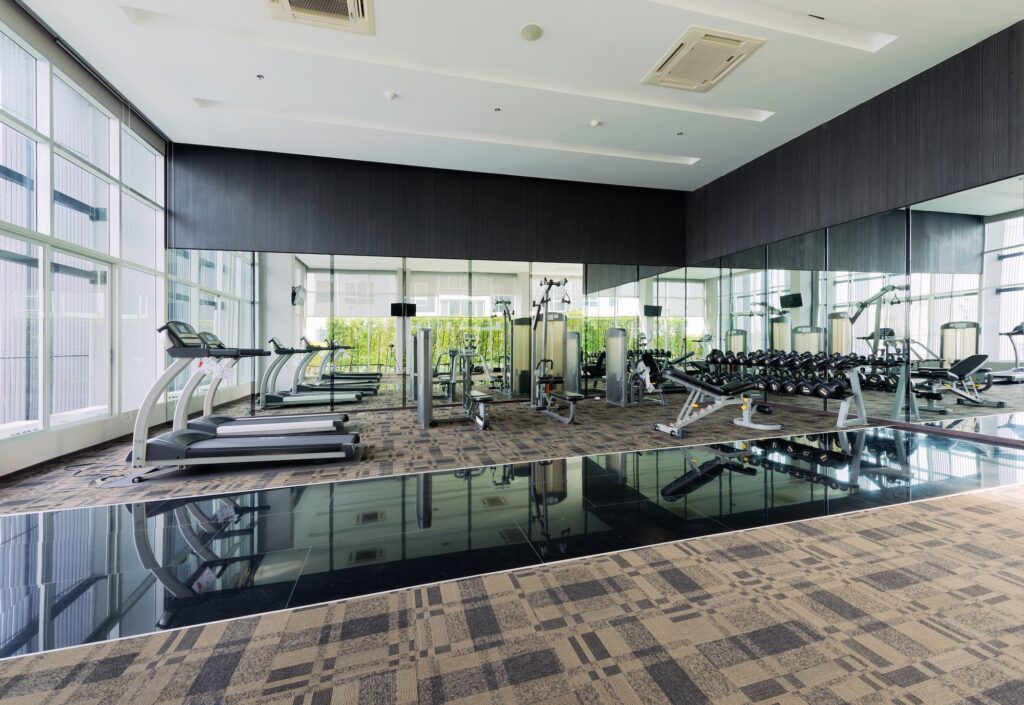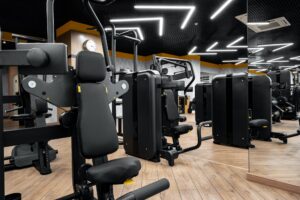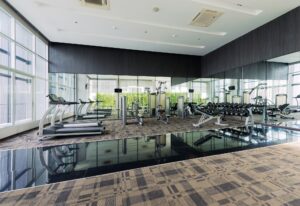I. Introduction
- Explanation of the topic and why it’s important to include both cardio and strength training in a fitness routine
- Brief overview of the article

II. What is Cardio and Strength Training?
- Definition and explanation of cardio and strength training
- Main differences between the two types of exercises
III. Why Both Cardio and Strength Training are Important
- The benefits of cardio and strength training
- Explanation of how both types of exercises complement each other
- Importance of incorporating both types of exercises in a fitness routine
IV. The Best Balance of Cardio and Strength Training
- Recommendations for the amount of cardio and strength training in a fitness routine
- The benefits of a balanced workout routine
V. The Impact of Doing Only Cardio or Only Strength Training
- Explanation of the negative effects of doing only cardio or only strength training
- Importance of incorporating both types of exercises to achieve a well-rounded fitness routine
VI. Choosing the Right Gym Equipment for Cardio and Strength Training
- Explanation of the types of gym equipment available for cardio and strength training
- Factors to consider when choosing the right equipment
VII. How to Incorporate Cardio and Strength Training at Home
- Tips for creating a home gym with the necessary equipment for cardio and strength training
- Benefits of having your own equipment at home
VIII. Conclusion
- Recap of the importance of including both cardio and strength training in a fitness routine
- Final thoughts on the benefits of a well-rounded fitness routine with both types of exercises.
When it comes to cardio and strength training, there’s no one-size-fits-all gym equipment. The best way to determine the right type of gym equipment for you is to consider your individual goals, budget, space constraints, and preferences. As you shop for the right equipment for your home or commercial gym, think

I.Introduction
Cardiovascular exercise, also known as cardio, refers to any activity that increases your heart rate and breathing rate. This type of exercise includes activities such as running, swimming, cycling, and jumping jacks. On the other hand, strength training involves using weights or resistance to build muscle strength and endurance. This includes exercises such as weightlifting, push-ups, and squats.
Both cardio and strength training are important components of a well-rounded fitness routine. Cardio exercises improve your heart health, and endurance, and can aid in weight loss. Strength training builds muscle mass, improves bone density, and helps to prevent injuries.
Including both types of exercise in your fitness routine can lead to greater overall health benefits. For example, combining cardio and strength training can improve cardiovascular health, increase muscle mass, improve flexibility, and boost overall energy levels.
Additionally, incorporating both types of exercise can lead to more sustainable weight loss. While cardio is great for burning calories, strength training helps to build muscle mass, which in turn can boost your metabolism and burn more calories throughout the day.
In summary, including both cardio and strength training in your fitness routine is crucial for achieving optimal health and wellness. By doing so, you can improve your cardiovascular health, build muscle mass, prevent injuries, and achieve sustainable weight loss.

II. What is Cardio and Strength Training?
Cardio, short for cardiovascular exercise, is any form of exercise that increases the heart rate and respiration, such as running, biking, or swimming. Strength training, on the other hand, is focused on building muscle mass and strength through resistance exercises like weightlifting, push-ups, or pull-ups.
The main difference between cardio and strength training is the way they affect the body. Cardio is great for improving endurance, burning calories, and strengthening the heart and lungs, while strength training is more focused on building muscle mass and improving overall strength and power.
III. Why Both Cardio and Strength Training are Important
Incorporating both cardio and strength training in a fitness routine has numerous benefits. Cardio improves heart and lung health, helps with weight loss, and improves overall endurance, while strength training increases muscle mass, boosts metabolism, and helps to prevent injury.
Both types of exercises complement each other, as cardio can help warm up the body for strength training, while strength training can improve overall performance in cardio exercises. Having a balanced workout routine that includes both types of exercises can lead to better overall fitness and health.
IV. The Best Balance of Cardio and Strength Training
The best balance of cardio and strength training in a fitness routine depends on individual fitness goals and preferences. However, a general recommendation is to incorporate at least 150 minutes of moderate-intensity cardio per week, and 2-3 sessions of strength training per week.
Having a balanced workout routine that includes both cardio and strength training can lead to better overall fitness and health.
V. The Impact of Doing Only Cardio or Only Strength Training
While both cardio and strength training have their own benefits, doing only one type of exercise can have negative effects on the body. For example, only doing cardio can lead to muscle loss, while only doing strength training can increase the risk of injury and limit overall endurance.
It is important to incorporate both types of exercises in a fitness routine to achieve a well-rounded workout and prevent negative effects on the body.
VI. Choosing the Right Gym Equipment for Cardio and Strength Training
When choosing gym equipment for cardio and strength training, there are a few factors to consider, such as the type of exercise, personal preferences, and budget.
For cardio exercises, equipment such as treadmills, exercise bikes, and elliptical machines can be used, while for strength training, equipment such as squat racks, pull-up bars, and weight benches are commonly used.
The materials used for making gym equipment can vary, with plastic, steel, wood, and leather commonly used materials. Manufacturers and suppliers prefer heavy-duty equipment because it provides better support and lasts longer.
VII. How to Incorporate Cardio and Strength Training at Home
Creating a home gym with the necessary equipment for cardio and strength training can be a cost-effective and convenient way to incorporate both types of exercises into a fitness routine.
Some equipment that can be used for cardio exercises at home includes exercise bikes, treadmills, and jump ropes, while for strength training, dumbbells, resistance bands, and pull-up bars can be used.
Having your equipment at home can also provide a greater sense of control over the environment and hygiene.
VIII. Conclusion
Incorporating cardio and strength training in a fitness routine is essential for achieving a well-rounded workout and better overall fitness and health. Finding the right balance of both types of exercises, choosing the right gym equipment, and incorporating them at home can help achieve a more effective and convenient workout routine.
Once you have established a good balance between cardio and strength training, you will see a difference in your overall health and fitness level. Not only will you feel stronger and more energetic, but you will also have a leaner and more toned body. By incorporating both types of exercise into your routine, you can achieve a well-rounded fitness level that will benefit you in all aspects of your life.
In conclusion, both cardio and strength training have their unique benefits, and it is essential to incorporate both into your fitness routine. Strength training is critical for building muscle mass, improving bone density, and boosting metabolism, while cardio is vital for improving cardiovascular health, burning calories, and reducing the risk of chronic diseases. It is recommended to aim for a balance of both types of exercise and to consult with a fitness professional to create a workout plan tailored to your specific goals and needs.

Which Material is used for making gym equipment
Remember to choose equipment made from high-quality materials, such as steel or heavy-duty plastic, and to look for machines that can support a broad range of exercises. Don’t forget to include accessories such as dumbbells, benches, and pull-up bars to create a well-rounded home gym environment. With the right equipment and a balanced exercise routine, you can achieve your fitness goals and enjoy the many benefits of a healthy and active lifestyle.
When it comes to building a home gym, it’s important to consider the materials used in the equipment you choose. Steel and heavy-duty plastic are great options for durable and long-lasting gym equipment. Wood can also be a good choice for some equipment, such as squat racks and pull-up bars. However, it’s important to note that not all woods are suitable for gym equipment, so it’s essential to research and choose high-quality materials.
Gym equipment manufacturers and suppliers also play an important role in the fitness industry. They create and manufacture exercise machines, components, and accessories to support a broad range of exercises. Unlike a few years ago, where gym memberships were the only option for people looking to exercise, now people have more access to fitness equipment for their own personal use at home. This has led to more members of the fitness industry and more people interested in strength training and cardio workouts.
In addition to choosing the right equipment and materials, it’s important to consider the balance of cardio and strength training in your workout routine. While both are important, the specific balance will depend on your individual goals and needs. It’s also important to adjust your workout plan over time as you progress and your goals change.
Overall, the fitness industry offers a wide range of gym equipment and exercise options to suit different fitness levels and goals. By choosing high-quality materials, incorporating both cardio and strength training, and seeking guidance from fitness professionals, you can create a well-rounded workout plan that will help you achieve your fitness goals and enjoy a healthier, more active lifestyle.
Cardio equipment
Regarding cardio equipment, there are various options available, such as treadmills, exercise bikes, and rowing machines. These machines offer a range of benefits, from improving cardiovascular health to burning calories and improving endurance. However, it’s important to note that strength training also plays a vital role in overall health and fitness.
Strength equipment includes items such as dumbbells, barbells, weight machines, and benches. These machines and equipment focus on building muscle mass, improving bone density, and increasing strength. It’s important to note that strength training doesn’t necessarily mean lifting heavy weights. Bodyweight exercises such as push-ups, pull-ups, and squats can also effectively build strength.
While cardio and strength training are essential, the balance between the two will depend on your individual goals and needs. For example, if your primary goal is to lose weight and improve cardiovascular health, incorporating more cardio into your workout routine may be beneficial. On the other hand, if your primary goal is to build muscle and increase strength, incorporating more strength training may be necessary.
In conclusion, the fitness industry offers a range of gym equipment and exercise options to suit different fitness levels and goals. By choosing high-quality materials and incorporating both cardio and strength training into your workout routine, you can create a well-rounded plan that will help you achieve your fitness goals and enjoy a healthier, more active lifestyle. Don’t hesitate to seek guidance from fitness professionals or do your own research to find the best equipment and workout plan for you.

Fitness equipment
When it comes to owning gym equipment, there are several options available. You can either purchase your own equipment for use at home or opt for a gym membership to access a broader range of equipment. Owning your own equipment can be more cost-effective in the long run, but requires a higher upfront investment. Meanwhile, gym memberships offer access to various equipment without the need to purchase and maintain your own machines.
Regarding materials used for gym equipment, manufacturers typically use a combination of steel, plastic, and wood, depending on the equipment’s purpose and structure. Heavy-duty machines such as squat racks and pull-up bars require durable steel components for support and stability, while smaller equipment like dumbbells and exercise bikes can incorporate plastic and other materials.
When manufacturing gym equipment, manufacturers must take into consideration the components and structure of the machine, as well as the environment in which it will be used. Machines must be durable and able to withstand frequent use, while also offering adjustability and flexibility for a variety of exercises.
In conclusion, the fitness industry offers a variety of equipment options to suit different fitness goals and levels. By incorporating both cardio and strength training into your workout routine, and choosing equipment made with high-quality materials, you can create an effective workout plan that will help you achieve your fitness goals and enjoy a healthier, more active lifestyle.

Fitness equipment industry
It is important to note that combining both cardio and strength training in your workout routine can offer numerous benefits. While cardio exercises like running and cycling can improve cardiovascular health and help burn calories, strength training with weights and resistance machines can build muscle mass, increase strength and bone density, and boost metabolism.
It’s also important to find a balance between cardio and strength training that works best for your fitness goals and lifestyle. For example, if you’re looking to build muscle mass and increase strength, you may want to focus more on strength training with some cardio exercises sprinkled in. On the other hand, if you want to lose weight and improve overall health, you may want to focus more on cardio exercises with some strength training incorporated.
In terms of whether strength training or cardio is more important, it ultimately depends on your goals. However, strength training is essential for maintaining overall health, as it can help prevent injuries, improve posture, and increase bone density. Additionally, strength training can also help improve performance in other physical activities and sports.
It’s also important to note that only cardio exercises can lead to muscle loss, especially in the upper body. This is because cardio exercises do not provide the same level of resistance as strength training, which is necessary to build and maintain muscle mass. Therefore, it’s recommended to incorporate both cardio and strength training in your workout routine for optimal health and fitness benefits.
In conclusion, while the fitness industry offers a wide range of equipment options, incorporating both cardio and strength training in your workout routine can offer numerous health benefits. Whether you choose to purchase your own equipment or opt for a gym membership, it’s important to choose equipment made with high-quality materials and to find a workout routine that suits your fitness goals and lifestyle.
When it comes to choosing equipment for your home gym or gym membership, it’s important to consider the materials used in manufacturing. Two main types of materials used in gym equipment are steel and plastic. Steel is a popular material for strength equipment because it is heavy-duty and can support heavy weights. Plastic, on the other hand, is often used in cardio equipment because it is lightweight and easy to move.
Manufacturers of gym equipment use a variety of components to create their machines, such as benches, squat racks, and pull-up bars. These components are made from a range of materials, including steel, wood, and leather. When choosing equipment, it’s important to consider the cost, the durability of the materials, and the adjustability of the machine to suit your individual needs.
In addition to traditional gym equipment, there are also many new exercise machines and accessories available on the market. Treadmills, exercise bikes, and ellipticals are popular cardio machines, while grip pads and speed ropes are popular accessories for improving grip strength and cardiovascular endurance.
Finally, it’s worth noting that the fitness industry has seen a surge in home gym equipment sales in recent years. With more people choosing to work out from home, there has been a growing demand for equipment that can support a full-body workout. This has led to the development of new workout machines and the availability of a broad range of equipment and accessories to support home workouts.
In summary, whether you choose to work out at home or in a gym, incorporating both cardio and strength training in your workout routine can offer numerous health benefits. By considering the materials used in manufacturing, the components of each machine, and the accessories available, you can find the right equipment to support your fitness goals and lead a healthier lifestyle.

When it comes to the best balance of cardio and strength training, it really depends on your fitness goals. If you’re looking to lose weight and burn fat, a combination of both cardio and strength training is recommended. However, if you aim to build muscle and increase strength, you may want to focus more on strength training.
If you’re short on time, a 20-minute cardio session after lifting weights can be beneficial for burning additional calories and increasing cardiovascular endurance. However, if you have more time, a longer cardio session or a separate cardio workout can offer even greater health benefits.
It’s important to note that strength training is more important than cardio for several reasons. First, strength training helps to build and maintain muscle mass, which is essential for weight management and overall health. Second, strength training can improve bone density and reduce the risk of osteoporosis. Finally, strength training can help to increase metabolism and improve insulin sensitivity, which can reduce the risk of chronic diseases such as diabetes and heart disease.
While doing only cardio can help to burn calories and improve cardiovascular health, it can lead to a loss of muscle mass and decreased strength. This is why it’s important to incorporate both cardio and strength training into your workout routine.
Regarding the frequency of cardio workouts, it’s generally recommended to do moderate-intensity cardio for 150 minutes or vigorous-intensity cardio for 75 minutes per week. However, if you’re new to exercise or have a medical condition, it’s important to consult with a healthcare professional before starting any new exercise routine.
In conclusion, finding the right balance of cardio and strength training can help you achieve your fitness goals and lead a healthier lifestyle. By incorporating both types of exercise into your routine, choosing the right equipment and materials, and considering your individual needs and goals, you can create an effective workout plan that works for you.
When it comes to gym equipment materials, there are two main types: metal and plastic. Metal is often used for strength equipment such as squat racks and weight machines, while plastic is commonly used for cardio equipment such as exercise bikes and treadmills. However, some gyms use wood and other materials for their equipment.
When it comes to choosing your own equipment, it’s important to consider the cost, durability, and adjustability of the equipment. For example, heavy-duty steel equipment may be more expensive but will likely last longer and support heavier weights. Additionally, adjustable equipment such as benches and squat racks can help you tailor your workout to your specific needs and goals.
In recent years, home gyms have become increasingly popular as more people look for convenient, cost-effective ways to stay in shape. With a broad range of equipment available, it’s easier than ever to create a home gym that meets your individual needs and preferences.
Some popular equipment for home gyms includes dumbbells, pull-up bars, and resistance bands, which can provide a full-body workout without the need for large machines. Additionally, accessories such as grip pads and speed ropes can add variety to your workout and target specific muscle groups.
In the fitness industry, manufacturers and suppliers are constantly creating new equipment and materials to support a range of exercises and fitness goals. From the machine’s structure to the components, such as leather and pipe, every detail is carefully considered to create an environment that supports health and wellness.
In conclusion, the differences between cardio and strength training are essential to understand when it comes to creating an effective workout routine. By incorporating both types of exercise and choosing the right equipment and materials, you can achieve your fitness goals and lead a healthier lifestyle. Whether you prefer to work out at a gym or in your own home, there are plenty of options available to help you get in shape and stay healthy.





